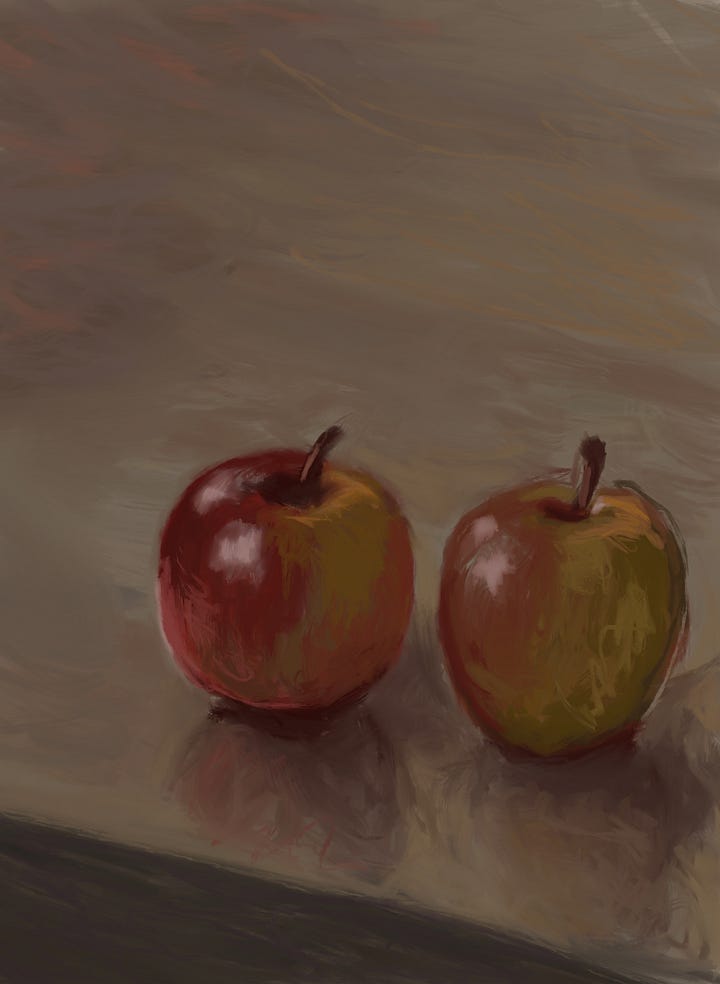The Invisible Ladder
A Sunday letter.
Dear Friend,
Forgive me, I am too cluttered and muddied to give you something beautiful. It has been a bad week, and I am doing poorly. In the book The Little Prince, the little prince asks the pilot who has crashed in the desert to draw him a sheep, but the pilot is struggling to draw a sheep. His sheep looks more like a goat, or it’s too old and won’t live a long time. Eventually he just draws a box with holes in it and tells the little prince that the sheep is inside, and the little prince is happy.
That is just to say, that I hope you will accept this drawing of a box in lieu of a drawing of a sheep. I tried to draw a few sheep, but it wasn’t working out. (In fact things were so bad that I didn’t draw very much this week at all.)


Inside the box with holes in it you will find: 1) a thoughtful few paragraphs about the use of the first person narrator in nonfiction, how to get away with it, and who can get away with it more easily (inspired in this particular instance by the author Jon Ronson and his work in The Psychopath Test and a related radio segment on This American Life); 2) a thoughtful few paragraphs on the film Babygirl, which was just released in France last month, and which I just saw last Sunday and am still thinking about; 3) how I’ve been presented with at least three different versions of the same fantasy in the past week, where women want men to tell them what to do, and what the hell to do with a thing like that in the current political climate, and what I think it’s about, and what it means; 4) the weird realization upon rewatching segments of the film Me and You and Everyone We Know, that you could most likely not make that movie today, at least not in America, although maybe in France 5) miscellaneous inspirational musings.

Actually, after causing myself far too much stress trying to write a coherent letter—which is of course not the point of these letters, as stated, as I am on sick leave, but whatever—I decided to open up the document of an unfinished essay I started in the summer and tried to revise in the fall, and see if I hated it. It’s the essay about drowning that I referenced in my note from early December. I did not hate it, so I’m sharing it with you today. Here it is:
Months ago, I became briefly fascinated by the way in which people drown. The warmer weather was just starting up, and someone had shared a video about what it really looks like when a swimmer gets into trouble. It doesn’t look like what you’d expect. It is not loud or dramatic. The person does not—cannot—attempt to get your attention. They can’t shout. They can’t wave. They don’t splash around. A person who is shouting and waving may be in aquatic distress, and you should help them, but they are not drowning.
Drowning is quiet and it happens fast. An ineffective instinct sets in. The body of the drowning person will be vertical in the water, their head at the waterline, tilted back, their mouth right at the surface, their eyes turned towards the nearest pool ledge or shore. A drowning person will look like they are trying to climb an invisible ladder underwater. Their hands and feet push down against supports that are not there. They know the supports are not there, but they push and step down in an attempt to find them anyway. They are unable to do anything else. A drowning person is in so much trouble that they can’t tell you that they are in trouble.


